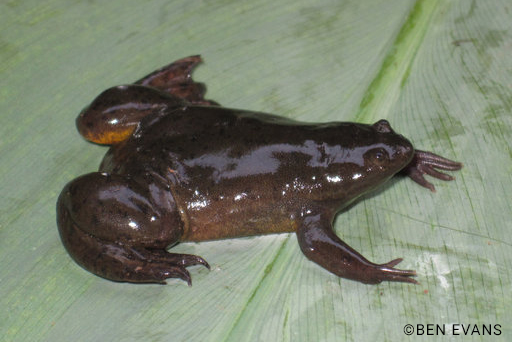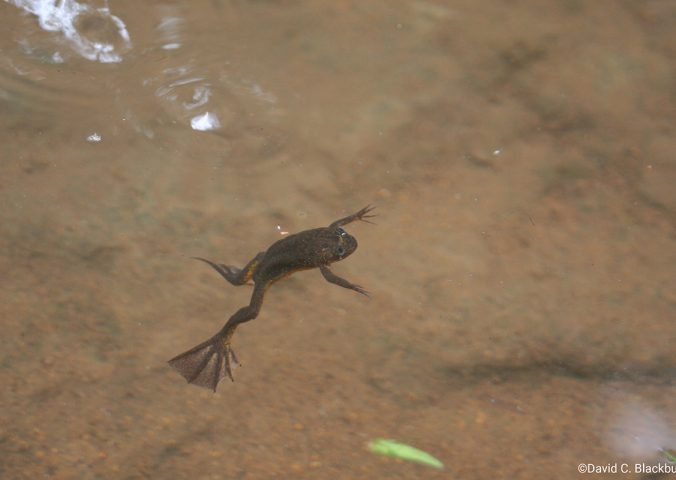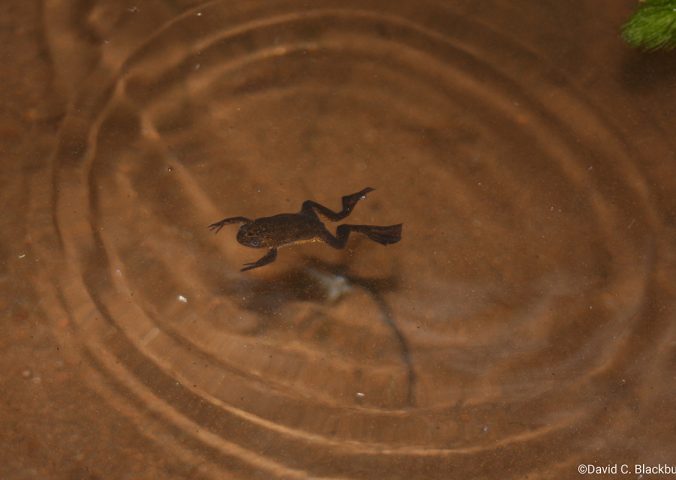About
The Lendu Plateau clawed frog is a species endemic to The Democratic Republic of the Congo.
The genus Xenopus (the “African clawed frogs”) diverged from the other genera in the Pipids family just under 50 million years ago, meaning this group is the most recently evolved within the tongueless frog family. The African clawed frogs have undergone drastic changes in chromosome number during their evolution, making them some of the most genetically unusual creatures in the world. They exhibit a trait known as polyploidy, which is when an organism has more than two sets of chromosomes. This species is under threat due to the very dense human population and the associated anthropogenic disturbances that has destroyed natural vegetation on the Lendu Plateau. Small scale agricultural activities that clear the land, drainage efforts and water pollution all have an impact on this species. No current conservation activities are known for this species and there are no protected areas in the vicinity of where this species was found. Site protection and sustainable management of the area is highly recommended to safeguard future populations of this species.
- Order: Anura
- Family: Pipidae
- Population: Common
- Trend: decreasing
- Size: 40-48mm
EDGE Score
Distribution
This species is endemic to the Lendu Plateau in the northern Albertine Rift, Democratic Republic of the Congo, where it is known from multiple localities. It has been recorded from elevations of between 1,835-2,081 m above sea level.
Habitat and Ecology
This species has been found in the areas of the Lendu Plateau where the savanna forest mosaic has been completely destroyed and the vegetation now present is primarily grassland. Individuals were collected from standing waterbodies that were occasionally encountered in disturbed agricultural areas. This species spends almost all of its life in water, including a fully aquatic tadpole stage.


